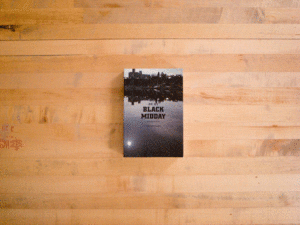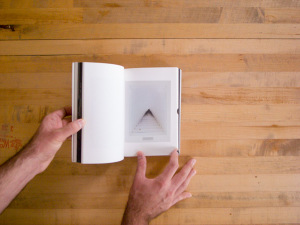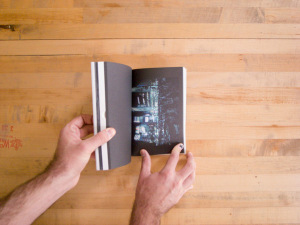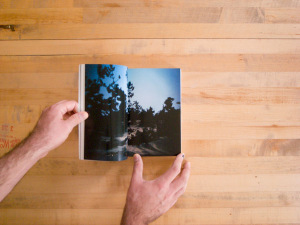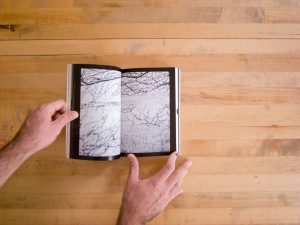The topic of urban housing has lately been popping up across all of the media that I consume. Given that fact, I was planning to write about Chanmin Park’s Blocks today as it would fit the trend. When I went to pull it off of the bookshelf, I pulled another book instead. The Memories of Floating Times just called to me to take it down off the shelf. I am not sure why this unassuming book that I’d never taken much note of grabbed my attention today, but it did. Blocks will have to wait another week.
The Memories of Floating Times isn’t so off topic from urban housing. Two articles I came across today seem particularly apropros lead ins to TMoFT: Stan Banos on his Reciprocity Failure blog linked to this PBS NewsHour segment on how Google’s busing of workers has become a hot button issue in regards to gentrification in San Francisco; at the NY Times, this article lays out how a young state assemblyman and his protege helped keep a Lower East Side (NYC) lot vacant for nearly half a century in order ostensibly to maintain the demographic make up of a neighborhood in order to solidify their political base.
How do we get from San Francisco and New York to Korea? TMoFT‘s very brief introductory text in English (there is a much more comprehensive text in Korean) describes the photographs in the book as capturing “the vivid realities of the back streets’ scenery of Korean society when it had just entered into rapid industrialization.” What comes after the photographs in this book is a welcoming of the kind of gentrification being bemoaned in San Francisco and an abhorrence of the kind of delay and foot dragging represented by Silver and Rapfogel in New York. The pace of building has been swift (if not always without dissent or missteps)
After a lengthy essay, the photographic plates begin. We are first greeted by a boy in his early(?) teens with a black eye staring rather balefully directly into the camera. He is followed by two delivery boys, one holding a still common delivery container for Chinese food and the other with a roll of newspapers tucked under his arm. The portraits continue: a barista (this isn’t last week?!), two students carrying leather briefcases that scream “Yuppie!”, a topless woman, a cop, a mailman, an ajashi, a woman in a hanbok, a monk smoking a cigarette, an ajumma, a motorcycle deliveryman, a man with a contorted face, a man in a dirty camouflage shirt and rubber gloves, a bearded old man in traditional Korean garb, a clean shaven old man in western garb, a young girl in a hanbok, a chef who looks away. All but a handful are three quarter length formal portraits in front of a gray studio backdrop. Like all of the photos on the book, they are taken on 35mm film and printed (and reproduced in the book) with the filed out film carrier showing a rebate running around the photograph.
We move outdoors; more portraits: an ajashi in an alley, two women cooking behind him; a taxi driver draped nonchalantly on the hood of his taxi; a motorcycle cop, traffic dense behind him; a bell hop standing tall; a soldier also standing tall; an ajashi in a dirty button down shirt with enormous lapels; a hip young(ish) woman in a leather jacket standing in front of racks of cloths looking fiercely into the camera; a man through a narrow window; a man in a record shop (or radio studio?); a man behind a barred window; a man in front of a fenced off area; a bartender, a woman, a boy holding a tiger mask over his face; a little person, hands in his pockets; a cobbler, his glasses askew; three men selling watches out of doors; a goateed man wearing a dock workers cap selling wind-up toys; an old man holding a creased Korean flag; a lunch counter waiter sitting on the ground on a folded newspaper outside of his booth; a man in jacket and slacks sitting slackly on the ground and covering his face with his hand; a poor person in dark rags hunched over a square bin, his head down, his back to a wall of heavy stone blocks; a man without shoes laying on the ground with his head in a large basket; a man in tattered cloths leaning against a pole that splits the photograph left and right, his back to the camera, a more affluent crowd walking towards the camera left of the pole; a man splayed on the ground (drunk? fallen?) wrapped around a pole. I could be just as easily cataloging the people I saw on the street in Seoul two weeks ago as those portrayed in Kim’s photographs. I am reminded, too, of August Sander, though without the formality or pomp.
Objects, one tightly composed still life per spread on the right hand page: dead bird, fish heads, shoes, dead plant, tattered kettle, ice covered cigarette advert, vinyl and hand lettered sign; rough metal surface rich with texture.
And now vignettes: a stack of books held under an arm; the train of a wedding dress splayed on a curb; a memorial; a door with a cross; the torn remnant of a paper poster pasted on a pole; a cafe; an old door; a door with six padlocks; burlap flaps over windows; a worn out chair; a worn out easy chair in a dilapidated building; a radio tied to the wall; another dead plant; a bare light bulb above cooking utensils; a rudimentary kitchen; a broken clock beside a flue(or an oven?); a pigeon alighting from garbage cans; a brick corner; an outdoor platform; urinals (the first image in the book to run across the gutter); a well (?); a make shift wooden foot bridge crossing a stream; a bus painted entirely white; inside the white bus; another bus resting headlong against a pile of boxes; another old bus shoved to the side of the road surrounded by bushes and covered with a tarp; yet another dilapidated bus burnt out and resting on its side; a burnt out car without wheels; a pile of cardboard and carts in front of a mural; a cart leaning against a pine tree; a sagging patched shingle wall; canvas tents and canvas fence with tall buildings in background. The American photographer Walker Evans comes to mind when I look at these images.
More vignettes: bedding, patterned, plain, plaid, folded and wrapped; a tangle of traditionally roofed buildings; an aperture through a variegated, patched and improvised building; a low slung concrete building, its corrugated steel roof leading back to the traditional roof of the building behind it; an alleyway and an electric pole; looking out over the roofs of a knotted neighborhood; refuse and debris; the narrow side elevation of a building; a stairway; layered roofs; an alleyway curving into the light; a door beneath a rock; a door from a cockeyed angle; the side of a building with a pole beside it; the side of a building dappled by the shadow of sunlight filtering through the branches of a tree and with a pole in front of it; a corrugated steel fence; two discarded sofas, a wall and a tree; building seen from a low vantage point; building seen from a high vantage point; rain falling on traditional tiled roofs; looking downhill on a tight knot of traditional tiled roofs; hazy view of tile roofed buildings seen from above; second hazy view of tile roofed buildings with a hazier set of buildings further in the distance; a canal with a new road and contemporary concrete block building behind it (this is the second photograph that runs across the gutter); two trees behind a wall (also running across the gutter).
The book’s final chapter comprises more photographs of buildings. I am going to conclude this review with a few thoughts on one image, the first image, in this chapter. The photographs is of a partially roofed outdoor market. We are in the first of two arcades, looking through it towards the second. Above us, the roof is missing a number of it’s corrugated fiberglass panels. The second three story arcade is similarly roofed. The photographic frame compresses it’s three delta roof line so that it merges and blends into the second story of the arcade we are in. The center of the photograph is a clear, paper white, blown out section of sky. It is shaped like an invading UFO from Asteroids. This clean space brings to mind–in my mind, the future. In the midst of the clutter of the present, an image of the future is being constructed. In the midst of the clutter of these images is the foundation of the coming future that is now the present.
The Memories of Floating Time
Kim Youngsoo
Essay by
Published by Youl Hwn Dang Publisher
1997
Printed in Korea

